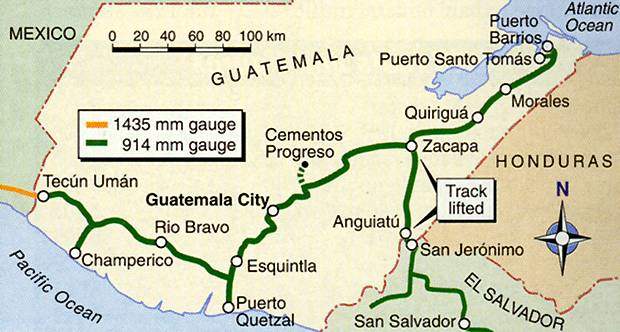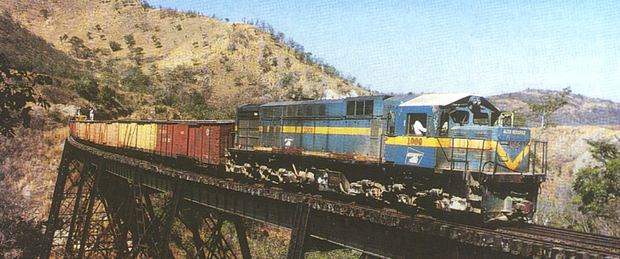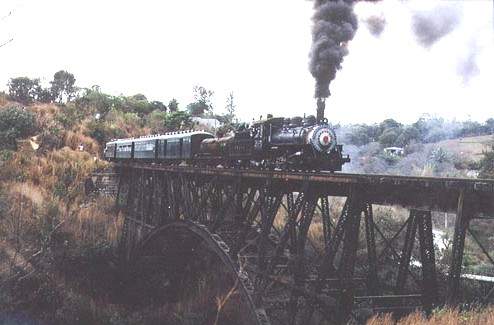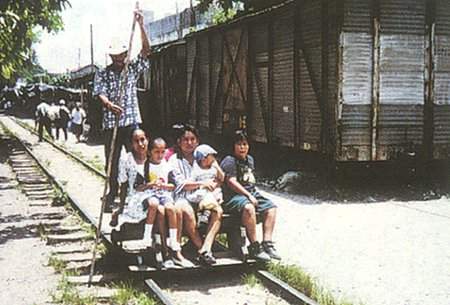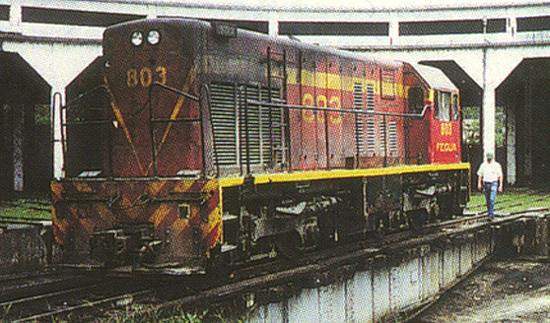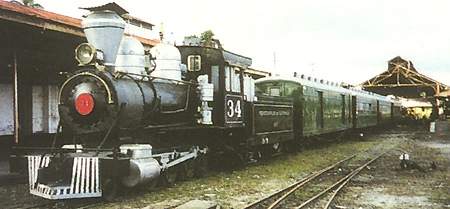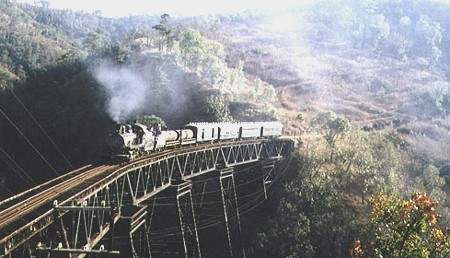Closed completely in 1996, progress was being made with the return to use of the derelict 784km (497 mile) rail network of Guatemala. The government had taken over the previously private network in 1968, renaming the system Ferrocarriles de Guatemala (FEGUA).
At its height, FEGUA enjoyed a status as the most important rail network in Central America, despite operating on a non-standard 3ft (914mm) gauge. It linked with the same gauge of El Salvador railways, where efforts continue to restore some of the services following total suspension during 2002. Northern neighbour Mexico uses 1,435mm gauge.
More importantly, it provided links between the country’s interior and the Atlantic and Pacific oceans, which, in reality, are its economic lifelines, providing the main routes by which its principal exports of coffee, bananas and sugar could be transported to their main markets. By 2000, containers, steel, cement and paper were also carried.
The Fegua reconstruction project
In October 1997 a 50-year concession was awarded to the Compania Desarrolladora Ferroviaria SA consortium, an affiliate of the Railroad Development Corporation (RDC) of Pittsburgh, US. To reconstruct and operate the railway, a new company, Ferrovías Guatemala (FVG), was created by RDC and included Guatemalan investors.
The concession also included port facilities and rights to develop alternative uses for the right of way, for example pipelines and fibre optics. Redevelopment of the country’s railways faced the familiar stumbling block of the constraints imposed by being under state control, which had allowed unregulated road transport to gain a decisive upper hand in winning new traffic.
The new operators stressed that they brought valuable experience from the operation of two rail route concessions in Argentina, and their main business, the Iowa Interstate Railway, from Chicago to Omaha in the US. An entrepreneurial international operator, RDC was to become owner of Eesti Raudtee, the Estonian rail network, in 2001 until government renationalisation in 2007.
RDC started to rebuild the old main line between Puerto Barrios on the Atlantic Coast and Guatemala City early in 1998. Plans called for the main line to be reopened by the end of 1998 between Puerto Barrios and Guatemala City, but massive damage from Hurricane Mitch delayed this until spring 1999. Several bridges were knocked off their abutments and needed to be replaced.
Infrastructure
The country’s rail network is 1,067mm gauge line consisting of 784km length. RDC believes the Guatemalan operation had strengths far beyond simple rail operations, its ownership of ports and real estate in and around the main stations giving it considerable potential. However, physical deterioration reached such a stage that passenger traffic ceased in 1994, and despite the possibility of privatisation, the country’s entire rail system closed two years later.
The scale of the investment needed meant it was forced initially to concentrate on the corridor offering the maximum return – the 300km corridor from Guatemala City to the Atlantic ports of Puerto Barrios and San Tomás, where road traffic carried goods as diverse as coffee to scrap metal, and bananas to cement.
Corporation FVG faced a number of unusual problems beyond the obvious obstacles of a lack of capital investment. Theft, vandalism and the widespread occupation of former railway premises by squatters all made the task more difficult, but road construction had also meant that connections to several former freight customers’ premises had been severed.
On 15 April 1999 a goods train ran between a cement plant in El Chile to the Guatemala City, and in the first full operational year 63,000t of goods were carried, rising to 110,000t in 2001. Under normal conditions one train per day each operates in each per direction and day, taking 12 hours to travel 300km.
Several links to private sidings needed restoration, but the most important new project was a new terminal to handle container and transhipment traffic.
Rolling stock
The operator had a fleet of 15 modern diesel locomotives, which date from 1982. Only seven engines were operable on the take-over. General Electric U10 locomotives were found to be in relatively good condition, having seen little use as traffic had declined before closure.
FVG had 200 freight vehicles in working order, mainly of low-capacity box and flat cars. By the end of 2006, the system had 322km in use, with 11 locomotives handing 93,000t that year. FGV also had two working steam locomotives for the tour charter market.
Signalling and communications
The project was described by RDC as ‘bootstrap capitalism’, by which the company intended to get the network running with the minimum investment, and then see what was needed to meet any demands created by new traffic flows. Thus signalling was to be restored where needed, and further investment would be dependent on traffic growth.
A simple ‘one train in section’ system will, therefore, be adequate for most needs, until the growth in traffic demanded more sophisticated methods.
The future
The rail network of Guatemala began its revitalisation from an unimaginable state of decay, but the new American operators were under no illusions as to the scale of the task.
The 200km Pacific corridor from Tecun Uman on the Mexican border to Puerto Quetzal and Esquintla, from where lorry loads could be transhipped to Guatemala City, was seen as the next priority. The next phase was the construction of a new line to Cementos Progreso, and then the restoration of the a link between the Pacific and Atlantic corridors with the reinstatement of the Esquintla-Guatemala City line.
RDC had its sights set on the reinstatement of the long-closed link between Guatemala and El Salvador. Reinstatement of passenger traffic was a possibility if it did not interfere with freight services.
The restoration of the network was effectively halted in August 2006 when the Guatemala government declared that aspects of the contract between them and FVG were against national interests. This, in turn, led RDC to seek protection for its investments, which had reached $15m by 2004, during March 2007.
Guatemala had ratified the CAFTA free trade agreement in 2005 and under these terms, FVG sought arbitration. In October 2007 all services were suspended by RDC pending the results of the claim. As a result, the future of Guatemalan rail services and network restoration remains unclear.

